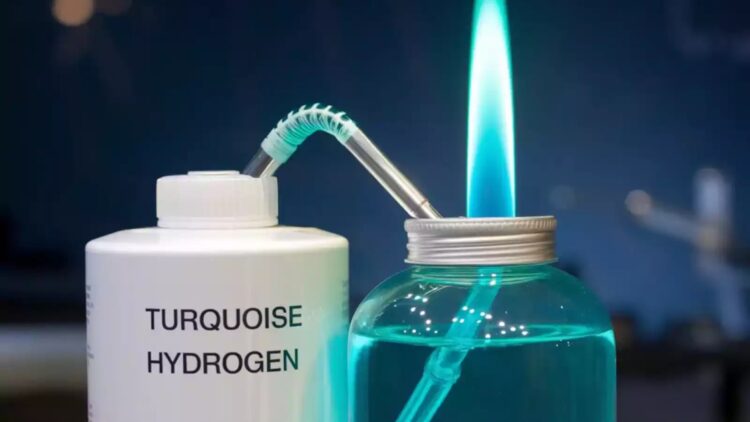It is increasingly common for industries worldwide to opt for cost-effective and low-pollution solutions. In this field, Europe is at the forefront, currently leading the production of hydrogen known as turquoise and using it as a platform for large-scale industrial development. Using turquoise hydrogen avoids CO2 production, is a clean process, and has superior economic and energy efficiency compared to other processes.
It is an easier and safer resource to transport and handle, which makes it even more attractive. This strategy implemented by Europe positions it as a leader, challenging the U.S. energy dependence on hydrogen produced with high emissions.
Turquoise Hydrogen
Europe has undergone a significant shift in its energy strategy, focusing on the production of turquoise hydrogen and its subsequent conversion into methanol. The main goal of this decision is to produce hydrogen without generating CO2 emissions, betting on cleaner energy sources. But, what is turquoise hydrogen? It is the hydrogen that results from a process called methane pyrolysis, which converts methane into hydrogen gas and solid carbon, without emitting CO2 into the atmosphere.
This is a new category that fits among the hydrogen sources already known:
- Green hydrogen. It is produced from water electrolysis using renewable energy, and it neither requires nor emits CO2.
- Blue hydrogen. It is obtained from natural gas with carbon capture.
- Gray hydrogen. This is methane reformed with steam without carbon capture, which emits large amounts of CO2.
Why has Europe bet on it?
Although the main motivation for seeking alternative energy sources is related to reducing greenhouse gas emissions into the atmosphere, there are other advantages for which Europe has invested in turquoise hydrogen.
- Costs and speed. Compared to the energy cost of green hydrogen electrolysis, methane pyrolysis requires only 13% of the cost. This allows production to be faster, cheaper, and in larger quantities.
- Conversion to Methanol. This process also offers transportation, handling, and storage that are safer and easier than pure hydrogen. It has also become an export commodity, allowing Europe to control the value chain, including production processes, chemicals, fuel for maritime transport, contracts, among others.
A clear example of the benefits of turquoise hydrogen production is the Finnish company Hycamite, which is building a plant in the city of Kokkola that is projected to produce 2,000 tons of hydrogen annually and 6,000 tons of solid carbon.
Where is the United States?
The current hydrogen production in the United States is gray, that is, the most polluting and the one that does not require methane capture. This decision places the United States at the tail end of the power that seeks and bets on alternative and efficient energies. The global leadership of the United States in the energy sector is challenged by the measure carried out by Europe, which not only aims to produce hydrogen but also to go beyond pilot plants.
It is not only a strategic challenge to control a new global value chain, but Europe also presents an economic challenge by competing with cheaper and cleaner energy production. The ability of the United States to innovate, adapt, establish rules, supply chains, and clean hydrogen production centers will determine whether they have the capacity to lead the market or whether, on the contrary, Europe will take the lead.
